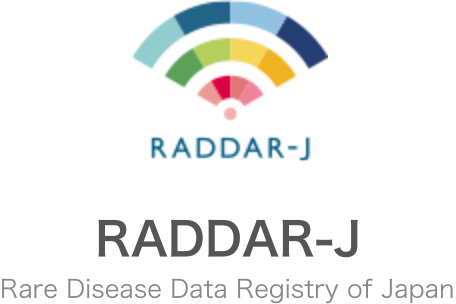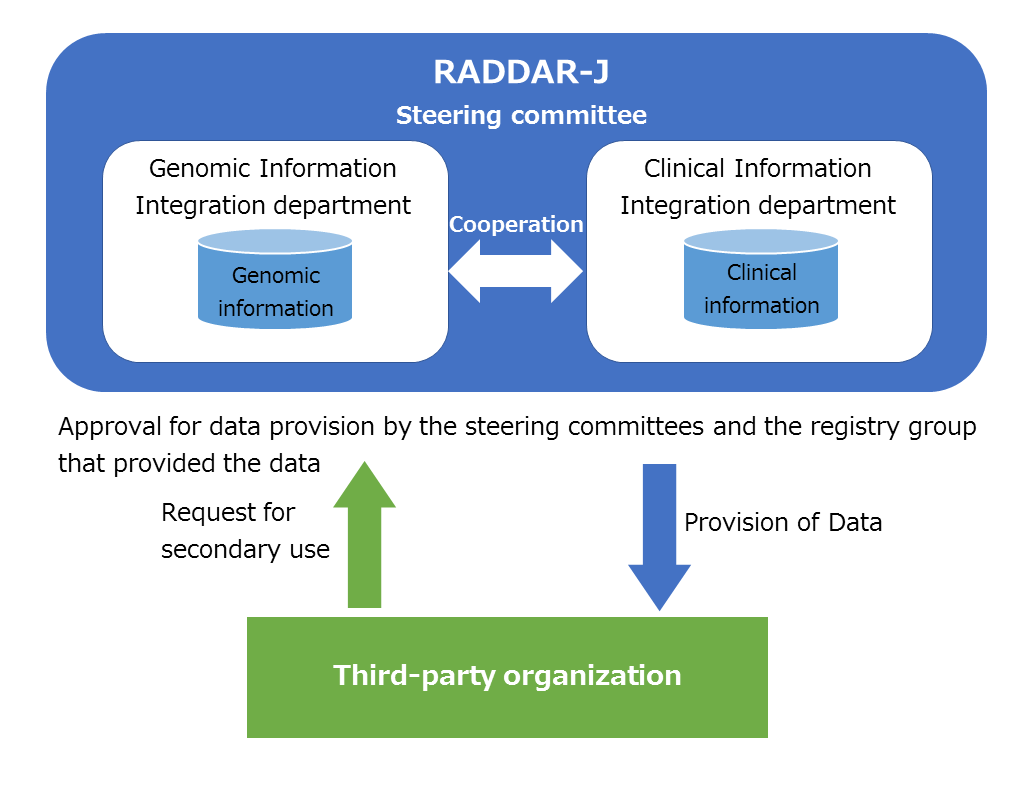Secondary use of data
Some of the data provided by the intractable disease registry groups to the RADDAR-J are available for secondary use.
- Secondary use of data refers to the release of data, managed and operated by the Genomic Information Integration department, Clinical Information Integration department, and RADDAR-J, to external third-party organizations.
- RADDAR-J believe that secondary use of data by third-party organizations working to elucidate the pathology and etiology of and obtain new findings on intractable diseases, will contribute to further our understanding of intractable diseases.
- Secondary use of data involves provision of data for a fee and registration in a public database.
- Data available for secondary use is limited to data for which consent for secondary use has been granted by the study subjects (patients).
- Secondary use of data requires the approval of the steering committees responsible for managing and operating the data, and the registry group that provided the data.



